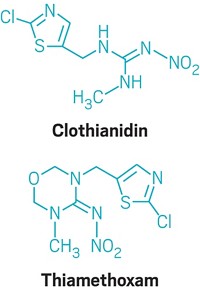Advertisement
Grab your lab coat. Let's get started
Welcome!
Welcome!
Create an account below to get 6 C&EN articles per month, receive newsletters and more - all free.
It seems this is your first time logging in online. Please enter the following information to continue.
As an ACS member you automatically get access to this site. All we need is few more details to create your reading experience.
Not you? Sign in with a different account.
Not you? Sign in with a different account.
ERROR 1
ERROR 1
ERROR 2
ERROR 2
ERROR 2
ERROR 2
ERROR 2
Password and Confirm password must match.
If you have an ACS member number, please enter it here so we can link this account to your membership. (optional)
ERROR 2
ACS values your privacy. By submitting your information, you are gaining access to C&EN and subscribing to our weekly newsletter. We use the information you provide to make your reading experience better, and we will never sell your data to third party members.
Environment
EPA reaffirms plan to ban chlorpyrifos on food
Agency cites concerns about neurotoxicity of organophosphate insecticide
by Britt E. Erickson
November 16, 2016
| A version of this story appeared in
Volume 94, Issue 46
EPA is one step closer to banning all U.S. uses of chlorpyrifos on food after formally taking a second look at the health risks associated with the organophosphate insecticide.
The agency initially proposed to revoke all food tolerances for chlorpyrifos last year, citing neurotoxicity concerns. But because of pushback from farmers and the pesticide’s maker, Dow AgroSciences, EPA reexamined toxicity data for the chemical.
After releasing its revised human health risk assessment for chlorpyrifos on Nov. 10, EPA again proposed to revoke all food tolerances. The agency says combined exposure to chlorpyrifos through food and drinking water in the U.S. is expected to exceed EPA’s safety standard.
Dow AgroSciences strongly disagrees with EPA’s conclusion. EPA’s assessment is not “based on valid, complete, and reliable scientific data,” says Phil Jost, a marketing leader for U.S. insecticides at Dow AgroSciences. Jost also says EPA failed to follow its policies for public access to data.
Dow AgroSciences claims that chlorpyrifos is safely used on more than 50 different crops in the U.S. For many pests, there are no viable alternatives, the company says.
EPA is under a court-ordered deadline to make a final determination on chlorpyrifos by March 31, 2017. The order came after EPA failed to respond to a 2007 petition from environmental groups urging EPA to ban chlorpyrifos. The groups argue that the pesticide is linked to neurodevelopmental risks in children.






Join the conversation
Contact the reporter
Submit a Letter to the Editor for publication
Engage with us on Twitter